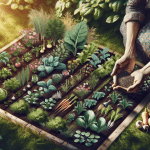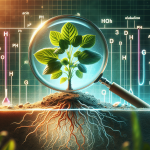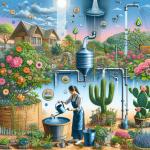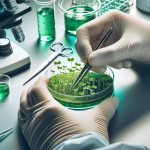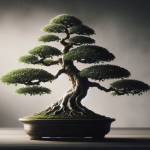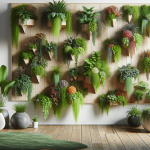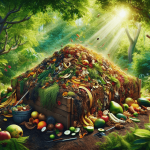This post may contain affiliate links. As an Amazon Associate, we may earn commissions from qualifying purchases.
Having indoor plants can bring beauty and life to your living space, but sometimes they can encounter common problems that need troubleshooting. Whether it’s yellowing leaves, pests, or wilting stems, it’s important to know how to address these issues to keep your indoor plants thriving. In this article, we will explore some practical tips and techniques on how to troubleshoot common problems with your indoor plants, so you can enjoy their vibrant presence in your home or office.
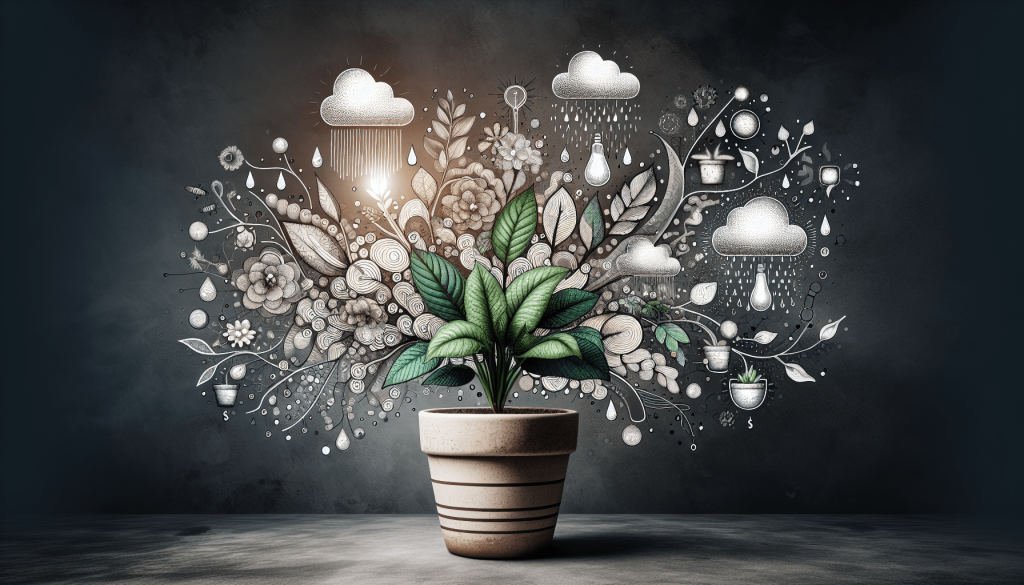
General Care
Overwatering
overwatering is a common problem that can lead to the decline and even death of indoor plants. When you water your plants too frequently or give them more water than they need, their roots may become waterlogged, resulting in root rot. Signs of overwatering include wilting, yellowing leaves, and a soggy or musty smell coming from the soil.
To prevent overwatering, make sure to check the moisture level of the soil before watering. Stick your finger about an inch into the soil and if it feels dry, it’s time to water. Also, ensure that your plants are in well-draining pots and that excess water can easily drain out. Consider using a saucer under your pots to catch any excess water, and empty it promptly.
Underwatering
On the other hand, underwatering happens when plants are not given enough water to meet their needs. Signs of underwatering include drooping leaves, dry soil, and leaves that curl and turn brown at the edges.
To avoid underwatering, water your plants thoroughly when the top inch of soil is dry. Ensure that water penetrates the entire root ball, allowing roots to absorb moisture and nutrients. However, be careful not to overcompensate and flood your plants with water, as this can lead to overwatering.
Lack of Light
Light is essential for photosynthesis, which is how plants convert light into energy to fuel their growth. Without enough light, plants may become weak, leggy, and have pale leaves. They may also grow towards the light source in an attempt to maximize their exposure.
To provide sufficient light for your indoor plants, make sure to place them near windows that receive bright, indirect light. If you have lower light conditions, you can supplement with artificial grow lights. Keep in mind that different plants have different light requirements, so choose plants that are suitable for the available light in your home.
Excessive Light
While lack of light can be detrimental, too much light can also harm indoor plants. Excessive light can cause sunburn on leaves, resulting in brown spots or patches. It can also lead to scorched leaves, especially if plants are placed too close to windows or intense light sources.
To protect your plants from excessive light, you can move them slightly away from direct sunlight or use curtains or blinds to filter the light. If natural light is intense in your home, consider using sheer curtains or applying a light shade cloth to the windows to diffuse the light and prevent it from burning your plants.
Improper Temperature
Temperature plays a crucial role in the health of indoor plants. Different plants have different temperature requirements, and exposing them to extreme temperatures can cause stress and damage. High temperatures can cause wilting, drooping leaves, and even scorching, while low temperatures can lead to slow growth, yellowing leaves, and even frost damage.
It’s important to understand the temperature preferences of your plants and provide them with a suitable environment. Avoid placing plants near drafts or vents where they can be exposed to rapid temperature changes. If needed, use a thermometer to monitor the temperature in your indoor space and make adjustments accordingly. Keeping your plants within their preferred temperature range will help them thrive.
Pests and Diseases
Aphids
Aphids are small, soft-bodied insects that can infest indoor plants. They feed on plant sap, which can weaken the plant and cause leaves to curl and become distorted. Aphids are often found on the undersides of leaves and can reproduce rapidly, leading to large infestations if not addressed.
To control aphids, you can manually remove them by gently wiping the affected leaves with a damp cloth or by spraying them with a mixture of water and mild soap. You can also introduce natural predators like ladybugs, lacewings, or parasitic wasps to your indoor environment.
Mealybugs
Mealybugs are another common pest that can affect indoor plants. These small, white insects are covered in a powdery wax and can be found on leaves, stems, and around leaf joints. Similar to aphids, mealybugs feed on plant sap, leading to weakened plants and yellowing leaves.
To get rid of mealybugs, you can use a cotton swab dipped in rubbing alcohol to dab them individually. Alternatively, you can wash the affected areas with a mixture of water and mild soap. Regularly inspect your plants for any signs of mealybug infestations to catch them early and prevent further damage.
Fungus Gnats
Fungus gnats are tiny flies that resemble mosquitoes. They are attracted to moist soil and feed on decaying organic matter. While adult fungus gnats are primarily a nuisance, their larvae can damage plant roots, leading to stunted growth and wilting.
To control fungus gnats, you can reduce their habitat by allowing the soil to dry out between waterings. Avoid overwatering and remove any decaying plant material from the soil surface. You can also use sticky traps to catch the adult gnats and introduce beneficial nematodes to the soil, which will prey on the larvae.
Spider Mites
Spider mites are tiny pests that are difficult to see with the naked eye. They often appear as tiny dots on the undersides of leaves and spin fine webs. Spider mites feed on plant sap, causing leaves to turn yellow, wither, and drop prematurely.
To combat spider mites, you can spray your plants with a mixture of water and mild soap or use a commercial insecticidal soap. Make sure to reach the undersides of leaves where the mites are most commonly found. Increasing humidity levels around your plants by misting them regularly can also help deter spider mites.
Root Rot
Root rot is a serious problem that occurs when the roots of plants are constantly exposed to excess moisture, leading to fungal or bacterial infections. Signs of root rot include a foul smell coming from the soil, wilting, and yellowing leaves.
To prevent root rot, it’s crucial to provide well-draining soil and pots with drainage holes. Allow the soil to dry out slightly between waterings and avoid overwatering. If root rot is detected, you may need to trim away affected roots, repot the plant in fresh, sterile soil, and adjust your watering habits to prevent further damage.
Leaf Problems
Yellowing Leaves
Yellowing leaves can be a sign of various issues, including nutrient deficiencies, overwatering, underwatering, and light imbalance. It’s important to identify the underlying cause in order to address the problem effectively.
If yellowing leaves are due to nutrient deficiencies, you can use a balanced fertilizer or provide specific nutrients that are lacking, such as nitrogen, phosphorus, potassium, iron, or magnesium. Adjusting watering practices, ensuring proper light exposure, and maintaining suitable temperature and humidity levels can also help prevent yellowing leaves.
Brown Spots
Brown spots on leaves can be caused by factors such as fungal or bacterial infections, sunburn, overfertilization, or nutrient deficiencies. Identifying the specific cause is key to resolving the issue.
If brown spots are caused by fungal or bacterial infections, you may need to prune away affected leaves and treat the plant with a suitable fungicide or bactericide. In the case of sunburn, adjusting the plant’s position or shading it from direct light can prevent further damage. Nutrient deficiencies can be addressed by providing the necessary nutrients through fertilization or adjusting the pH level of the soil.
Curling Leaves
Leaf curling can be a result of various factors, including pest infestations, nutrient deficiencies, improper watering, or temperature stress.
If curling leaves are due to pest infestations like aphids or spider mites, the pests should be addressed using the appropriate control methods mentioned earlier. Nutrient deficiencies can be resolved by fertilizing the plant with the necessary nutrients. Ensuring proper watering techniques and maintaining suitable temperature ranges can also help alleviate leaf curling.
Wilting Leaves
Wilting leaves are often a sign of water stress, either due to underwatering or overwatering. When plants lack water, their leaves may droop and become limp. Conversely, overwatering can lead to root rot, causing the roots to become ineffective in absorbing water, resulting in wilting.
To address wilting leaves, carefully assess the moisture level of the soil and adjust watering accordingly. If underwatering is the issue, water the plant thoroughly and ensure that water reaches the entire root system. If overwatering is the problem, ensure proper drainage of the pot and adjust watering frequency to prevent waterlogged soil.
Drooping Leaves
Drooping leaves can indicate a variety of problems, such as nutrient deficiencies, water stress, temperature stress, or pest infestations.
To determine the cause of drooping leaves, evaluate the overall plant care routine. Check for signs of nutrient deficiencies and provide appropriate fertilization. Ensure that watering practices are suitable for the plant’s needs, neither overwatering nor underwatering. Maintain optimal temperature ranges and inspect the plant for any signs of pests. Addressing the specific issue causing drooping leaves will help revive your plant.
Root Problems
Root Bound
Root bound occurs when a plant has outgrown its current pot, resulting in a dense mass of roots that wrap around the root ball. This can restrict root growth, inhibit nutrient absorption, and lead to stunted growth and plant decline.
To address root bound plants, you will need to repot them into a larger pot with fresh soil. Gently tease apart the roots to loosen them before placing the plant in the new pot. This will encourage healthy root expansion and support the plant’s growth.
Root Rot
Root rot, as discussed earlier, is caused by excessive moisture leading to fungal or bacterial infections in the roots. It can result in root decay and compromise the plant’s ability to uptake water and nutrients.
To prevent root rot, ensure proper drainage in the pot by using pots with drainage holes and well-draining soil. Adjust watering practices to avoid overwatering and provide adequate air circulation to the roots. If root rot is already present, trim away affected roots, repot the plant in fresh soil, and adjust watering habits to prevent recurrence.
Root Decay
Root decay refers to the deterioration of roots due to various factors, including poor drainage, overwatering, or lack of oxygen. It can lead to weakened plants with stunted growth, and in severe cases, plant death.
To address root decay, provide well-draining soil and pots with drainage holes to ensure excess water can freely escape. Monitor watering practices and ensure that the soil doesn’t become waterlogged. If root decay has already occurred, you may need to trim away affected roots, repot the plant in fresh soil, and adjust watering habits to prevent further decay.
Root Diseases
Root diseases can be caused by fungal, bacterial, or viral infections that attack the plant’s roots. These infections can impede root function, hinder nutrient absorption, and weaken the overall health of the plant.
To prevent root diseases, ensure proper sanitation by using sterile pots, clean gardening tools, and disease-free soil. Avoid overwatering and provide adequate drainage to prevent waterlogged conditions. If root diseases are detected, consult with a specialist or garden center for appropriate treatments, which may include fungicides or bactericides.
Lack of Roots
Lack of roots can occur in plants that have been overwatered or suffered from root rot. It can also be observed in young plants or plants that have been propagated recently.
To promote root growth and development, ensure proper watering practices and provide suitable growing conditions for your plants. This includes using well-draining soil, pots with drainage holes, and appropriate watering techniques. If necessary, you can use root-promoting fertilizers or supplements to encourage root growth.
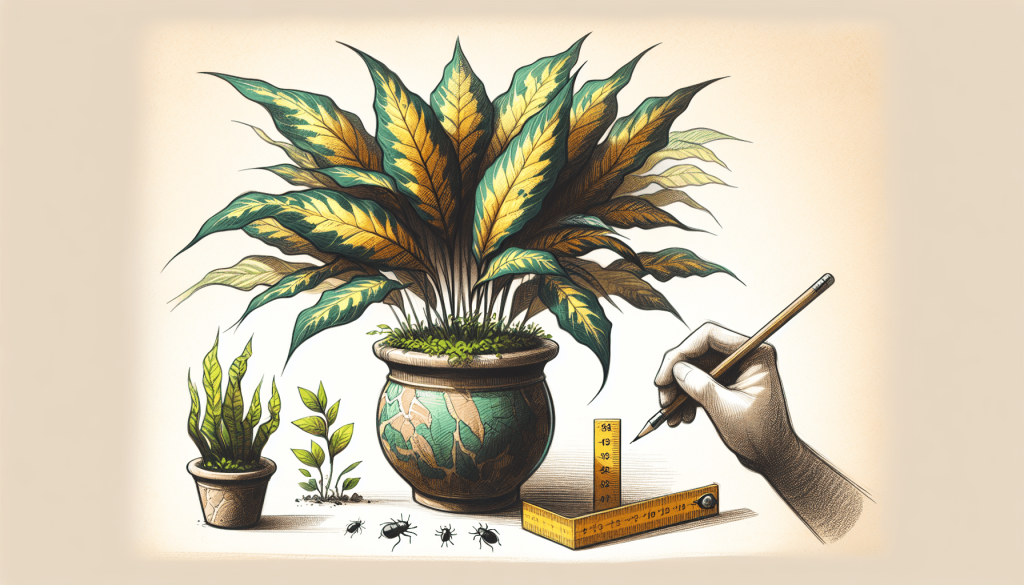
Nutrient Deficiencies
Nitrogen Deficiency
Nitrogen is an essential nutrient for plant growth and is responsible for healthy leaf and stem development. A lack of nitrogen can result in slow growth, pale or yellowing leaves, and weak stems.
To address nitrogen deficiencies, you can use nitrogen-rich fertilizers or organic amendments. Fertilizers with a higher nitrogen content or those specifically formulated for leafy green plants can help replenish nitrogen levels in the soil. Follow the recommended application rates on the fertilizer packaging to avoid overfertilization.
Phosphorus Deficiency
Phosphorus is crucial for healthy root development, flowering, and fruit production. A lack of phosphorus can lead to stunted growth, poor root development, and delayed flowering or fruiting.
To address phosphorus deficiencies, you can use fertilizers with a higher phosphorus content or specific products formulated for promoting flowering and fruiting. Bone meal or rock phosphate are organic options that can provide phosphorus to the soil. Apply the fertilizer according to the package instructions to ensure proper nutrient uptake.
Potassium Deficiency
Potassium is essential for overall plant health and plays a role in various processes such as photosynthesis, water regulation, and disease resistance. A lack of potassium can result in weak stems, leaf yellowing or browning, and decreased disease resistance.
To address potassium deficiencies, you can use fertilizers with a higher potassium content or those specifically formulated to address potassium deficiencies. Potassium sulfate or potassium chloride are common sources of potassium in fertilizers. Follow the recommended application rates to avoid overfertilization.
Iron Deficiency
Iron is a micronutrient that is crucial for chlorophyll production and overall plant health. Iron deficiencies can lead to yellowing between leaf veins, known as interveinal chlorosis, and stunted growth.
To address iron deficiencies, you can use iron chelate fertilizers or apply iron-rich soil amendments. Fertilizers with a higher iron content or those specifically formulated for iron deficiencies can help replenish iron levels in the plant. Follow the recommended application rates to ensure proper iron uptake.
Magnesium Deficiency
Magnesium is another essential micronutrient that is involved in chlorophyll production and energy metabolism. A lack of magnesium can cause yellowing between leaf veins, similar to iron deficiencies, and overall poor plant growth.
To address magnesium deficiencies, you can use fertilizers with a higher magnesium content or those specifically formulated for magnesium deficiencies. Epsom salt, which is magnesium sulfate, can be dissolved in water and applied as a foliar spray or incorporated into the soil. Follow the recommended application rates to avoid overfertilization.
Environmental Factors
Humidity Levels
Humidity levels can greatly impact the health and growth of indoor plants. Most indoor plants prefer higher humidity levels than what is typically found in homes, especially during dry winter months or in air-conditioned environments. Low humidity can cause leaves to dry out, while high humidity can create a favorable environment for pests and fungal diseases.
To increase humidity levels, you can use a humidifier, group plants together, or place trays filled with water near your plants. Misting your plants daily can also help increase humidity directly around them. Conversely, if you have plants that prefer drier conditions, you can use a dehumidifier or provide good air circulation to prevent excessive moisture.
Air Circulation
Proper air circulation is important for indoor plants as it helps prevent stagnant air, remove excess moisture, and minimize the risk of fungal diseases. Insufficient air circulation can result in poor plant health, stunted growth, and increased susceptibility to pest infestations.
To improve air circulation around your plants, you can use oscillating fans to gently move the air. Placing plants near windows or doors where there is natural airflow can also help. Avoid overcrowding plants and maintain suitable spacing to allow adequate air movement. Regularly opening windows to facilitate cross ventilation can further enhance air circulation.
Indoor Air Pollution
Indoor air pollution can negatively affect the health of your indoor plants. Common sources of indoor air pollution include volatile organic compounds (VOCs) from furnishings and cleaning products, tobacco smoke, and even chemicals released by certain plants.
To reduce indoor air pollution, ensure proper ventilation in your home by regularly opening windows. Choose low VOC or natural cleaning products and avoid smoking indoors. If you have plants known for emitting high levels of chemicals like formaldehyde, such as some species of Ficus, consider limiting their presence or placing them in well-ventilated areas.
Chemical Exposure
Chemical exposure can harm indoor plants and disrupt their growth. Exposure to chemicals from pesticides, herbicides, or household cleaning products can lead to leaf damage, yellowing, or even plant death.
To protect your plants from chemical exposure, avoid using chemical pesticides or herbicides near your indoor plants. Use organic or natural alternatives to control pests and weeds. When cleaning around your plants, be cautious about spraying or spilling cleaning products directly on them. Consider moving delicate or sensitive plants to a safe location during cleaning activities.
Pet Damage
Pets, especially cats and dogs, can sometimes cause damage to indoor plants. They may nibble on leaves, dig in the soil, or knock pots over, leading to broken branches and displaced plants.
To protect your plants from pet damage, you can create physical barriers using plant stands, trellises, or placing plants out of reach. Train your pets to avoid interacting with your plants, using positive reinforcement and redirection techniques. Alternatively, you can choose pet-friendly plants that are safe for your furry friends to be around.
Choosing the Right Plant
Suitable Indoor Plants
When selecting indoor plants, it’s important to consider their specific requirements and how well they adapt to the indoor environment. Some plants are better suited for indoor conditions due to their tolerance to low light levels, limited space, and humidity fluctuations.
Suitable indoor plants often include varieties of pothos, snake plants, ZZ plants, peace lilies, and philodendrons. These plants are known for their adaptability to indoor environments, ease of care, and ability to thrive with minimal maintenance.
Plants to Avoid
While indoor plants can add beauty and a touch of nature to your home, there are certain plants that are better suited for outdoor gardens or are known to be toxic to pets or children.
Plants such as Sago palm, oleander, dieffenbachia, and lilies should be avoided in homes with pets or small children, as they can be toxic if ingested. Additionally, plants that require high levels of light or humidity, such as orchids or ferns, may not thrive in low-light or dry indoor environments.
Plants for Low-Light Conditions
If you have areas in your home with limited natural light, there are still many indoor plants that can flourish in low-light conditions. These plants have adapted to lower light levels and can still thrive with proper care.
Some examples of low-light-tolerant plants include pothos, snake plants, ZZ plants, cast iron plants, and Chinese evergreens. These plants have the ability to photosynthesize efficiently with limited light, making them ideal choices for darker areas of your home.
Plants for High-Humidity Environments
If you have a bathroom or a space with consistently high humidity levels, there are plants that can thrive in these conditions. High-humidity environments mimic the natural habitat of certain tropical plants and can support their growth.
Plants that thrive in high-humidity environments include ferns, Calatheas, begonias, and orchids. These plants enjoy the moisture in the air and can benefit from the humidity provided by bathrooms or humidifiers.
Plants for Pet-Friendly Homes
If you have pets, it’s important to choose indoor plants that are safe for them. Some plants are toxic to cats and dogs if ingested, so it’s crucial to select pet-friendly options.
Pet-friendly plants may include varieties such as spider plants, Boston ferns, African violets, and bromeliads. It’s always a good idea to research plants and verify that they are safe for the specific pets you have before introducing them into your home.
Repotting and Transplanting
When to Repot
Knowing when to repot your indoor plants is crucial for their health and growth. If a plant has become root bound, meaning the roots have filled the pot and started to circle around the root ball, it’s time for repotting. Other signs that a plant needs repotting include roots growing out of the drainage holes, water draining too quickly, or the plant becoming too top-heavy.
Typically, indoor plants need to be repotted every 1-2 years. However, some plants may require more frequent repotting due to their fast growth. Observe your plants closely and monitor for signs of root bound conditions or stunted growth as indicators that repotting is necessary.
Selecting the Right Pot
Choosing the right pot for your repotting needs is important for the health and growth of your plants. The pot should have proper drainage holes to allow excess water to escape and prevent waterlogged soil.
Consider the size of the pot in relation to the size of the plant’s root system. The new pot should be slightly larger than the current one to allow room for root growth. However, avoid using pots that are too large as they can retain excessive moisture and potentially lead to overwatering.
Transplanting Techniques
When transplanting your indoor plants, it’s important to handle them with care to avoid damaging the roots or causing unnecessary stress. Here is a step-by-step guide for transplanting:
- Prepare the new pot by adding a sufficient amount of fresh, well-draining soil.
- Gently remove the plant from its current pot by supporting the base of the plant and lightly tapping the pot’s sides to release the plant and its root ball.
- Inspect the roots and gently untangle or trim any circling or damaged roots.
- Place the plant in the new pot and fill in the gaps with fresh soil, ensuring that the plant is at the same level it was in its previous pot.
- Lightly press the soil around the plant to secure it, but avoid compacting the soil too tightly.
- Water the plant thoroughly to settle the soil and promote root-to-soil contact.
Proper Soil Mix
Choosing the right soil mix is essential for the proper growth and development of indoor plants. A suitable soil mix should provide good drainage while retaining enough moisture and nutrients for the plant.
Generally, a well-draining soil mix for indoor plants can consist of a blend of potting soil, peat moss, perlite, and/or vermiculite. This mix allows excess water to drain away while still providing ample moisture retention for the roots.
It’s important to note that different plants may have specific soil requirements. Some plants, like succulents and cacti, require a fast-draining mix with a higher proportion of sand or grit. Research the specific needs of your plants to ensure the optimal soil mix.
Post-Transplant Care
After repotting or transplanting your indoor plants, it’s important to provide proper care to help them adjust and thrive in their new environment. Here are some guidelines for post-transplant care:
- Water the plant thoroughly after transplanting to ensure that the soil is evenly moist.
- Monitor the soil moisture levels closely and adjust watering accordingly. Avoid overwatering, as this can lead to root rot.
- Place the plant in an area with suitable light conditions. Avoid direct sunlight immediately after transplanting, as it can stress the plant.
- Limit fertilization for a few weeks after transplanting to allow the plant to acclimate to its new pot and soil.
- Maintain appropriate humidity levels by misting or using a humidifier, especially if the plant prefers higher humidity.
- Monitor the plant closely for signs of stress or shock. With proper care and time, most indoor plants will recover and adapt to their new pots.
Pruning and Trimming
Reasons for Pruning
Pruning is an essential practice for maintaining the health, shape, and size of indoor plants. There are several reasons why pruning is necessary:
- Promote healthy growth: Pruning helps remove dead, damaged, or diseased parts of the plant, allowing the plant to focus its energy on new growth.
- Control plant size: Regular pruning can prevent indoor plants from becoming too large or overcrowded, ensuring they stay within desired proportions.
- Shape and aesthetic appeal: Pruning can help shape the plant, encourage bushier growth, and enhance its overall appearance.
- Removing pests or diseases: Pruning can help eliminate or control pests and diseases by removing affected plant parts.
- Propagation: Pruning also allows you to collect cuttings for propagation, enabling you to grow new plants from existing ones.
Tools for Pruning
Having the right tools for pruning indoor plants is important to ensure clean cuts and minimize damage to the plant. Here are some commonly used tools for pruning:
- Pruning shears: These are handheld scissors with sharp blades, perfect for cutting small to medium-sized branches or stems.
- Pruning snips: Similar to pruning shears, but with finer, more delicate blades, snips are ideal for precision pruning and minor trimming.
- Pruning saw: This tool is useful for cutting thicker branches or stems that are too large for pruning shears.
- Sterilizing solution: To prevent the spread of diseases, it’s important to clean and sterilize your pruning tools before and after use. A solution of diluted bleach or rubbing alcohol can be used for sterilization.
Choose tools that are appropriate for the size and type of plant you are pruning. Keep your tools clean and sharp to ensure precise cuts and reduce the risk of disease transmission.
Pruning Techniques
Proper pruning techniques can help minimize damage and promote healthy growth in your indoor plants. Here are some basic pruning techniques to consider:
- Start with sterile tools: Before pruning, make sure your tools are clean and sterilized to prevent the spread of diseases.
- Identify the areas to prune: Determine which branches, stems, or leaves need to be removed for the desired outcome.
- Make clean cuts: Use sharp, sterilized pruners to make clean cuts just above a leaf node or lateral branch. Avoid leaving stubs or removing too much foliage at once.
- Remove dead or damaged parts: Start by removing any dead, damaged, or diseased parts of the plant. This will improve its overall health and appearance.
- Shape and thin out: If desired, shape the plant by selectively removing branches to enhance its form and encourage bushier growth. Thin out excessive foliage to improve air circulation and reduce the risk of pests and diseases.
- Step back and assess: As you prune, step back periodically to evaluate the overall shape and balance of the plant. This will help you determine if further pruning is necessary.
Keep in mind that different plants may have specific pruning requirements. Some plants may require more frequent pruning, while others may require minimal maintenance. Research the specific care guidelines for your plants to ensure proper pruning techniques are applied.
Trimming Dead Leaves
Dead leaves on indoor plants can be unsightly and may also serve as a breeding ground for pests and diseases. Trimming dead leaves is an important practice to maintain the overall health and appearance of your plants.
To trim dead leaves, use sterilized pruning shears or scissors to carefully remove the entire dead leaf from its base. Make a clean cut just above the point where the leaf emerges from the stem. Regularly inspect your plants for dead leaves and remove them promptly to prevent any potential issues.
Promoting Growth
Pruning can play a significant role in promoting growth for indoor plants. By removing dead, damaged, or overgrown parts, the plant can redirect its energy towards new growth and development.
To promote growth, selectively prune branches or stems that are inhibiting the overall growth or shape of the plant. This can encourage lateral branching and bushier growth. Regularly evaluate your plants and determine where pruning is necessary to maintain their optimal form and promote healthy growth.
Watering Techniques
Determining Water Needs
Properly watering indoor plants is essential for their overall health. To determine the water needs of your plants, it’s important to consider various factors such as the plant’s size, stage of growth, environmental conditions, and the type of soil it’s planted in.
To assess watering needs, check the soil moisture levels by sticking your finger about an inch into the soil. If it feels dry at that depth, it’s time to water. However, if the soil feels moist or damp, it indicates that watering is not yet necessary.
Proper Watering Frequency
The frequency of watering your indoor plants can vary depending on several factors, including the plant species, pot size, and environmental conditions. While it’s important to avoid overwatering, it’s equally crucial not to underwater your plants.
As a general guideline, most indoor plants thrive with a consistent watering schedule of once a week. However, adjust the frequency based on the needs of your specific plant. Some plants may require more frequent watering if they prefer consistently moist soil, while others may prefer drier intervals between waterings.
Watering Methods
There are several effective watering methods to ensure proper hydration for your indoor plants. Here are some common methods:
- Pouring: This is the most common method, where you water the plant by gently pouring water onto the soil around the base of the plant. Ensure that water reaches the entire root ball.
- Bottom watering: Place the plant pot in a tray or saucer filled with water and allow the soil to absorb water through the drainage holes. Be cautious not to leave the pot sitting in water for an extended period to avoid waterlogged soil.
- Soaking: For plants with particularly dry soil, you can fill a basin or sink with water and soak the entire pot until the soil is thoroughly saturated. Remove the pot from the water and allow excess water to drain.
- Misting: Some plants, especially those that prefer higher humidity levels, can benefit from misting. Use a spray bottle filled with water to lightly mist the foliage, ensuring that the water droplets are small and do not form large droplets that can damage the leaves.
Select a watering method that suits your plant’s needs and the specific situation. Consider factors such as the plant’s size, water requirements, and the type of pot and soil you are using.
Testing Soil Moisture
Regularly monitoring the soil moisture level is crucial for proper watering. While the finger test is a good indicator, you can also use moisture meters or probes to obtain more accurate readings of the soil’s moisture content.
Moisture meters typically have a probe that you insert into the soil to measure the moisture level. Follow the manufacturer’s instructions to ensure accurate readings. These tools can be especially helpful if you have a large number of plants or want to avoid disturbing the soil by repeatedly inserting your finger.
Watering Signs to Look For
Indoor plants often provide visible signs that indicate their water needs. Here are some common signs to look for:
- Wilting: Wilting is a clear indication that the plant needs water. However, keep in mind that wilting can also be a sign of overwatering, so it’s important to assess the soil moisture level.
- Dry soil: If the top inch of soil feels dry to the touch, it’s usually a sign that watering is required. Be cautious and avoid waiting until the soil is bone dry, as extreme dryness can stress the roots.
- Lighter pot: If you notice that the pot feels significantly lighter when you lift it, it may indicate that the soil has dried out and the plant needs water.
- Yellowing or drooping leaves: When plants lack water, leaves may yellow, droop, or become limp. While these symptoms can also be caused by other factors, watering is an important first step to address the issue.
By paying attention to these signs and regularly checking the soil moisture level, you can ensure that your indoor plants receive adequate water to maintain their health and vitality.
In conclusion, troubleshooting common problems with indoor plants requires a holistic approach that considers factors such as watering, lighting, temperature, pests, and diseases. By understanding the specific needs of your plants and providing appropriate care, you can help them thrive and enjoy a healthy and vibrant indoor garden. With proper attention and timely interventions, you’ll be able to troubleshoot and overcome challenges while enjoying the beauty and benefits of indoor plants.

